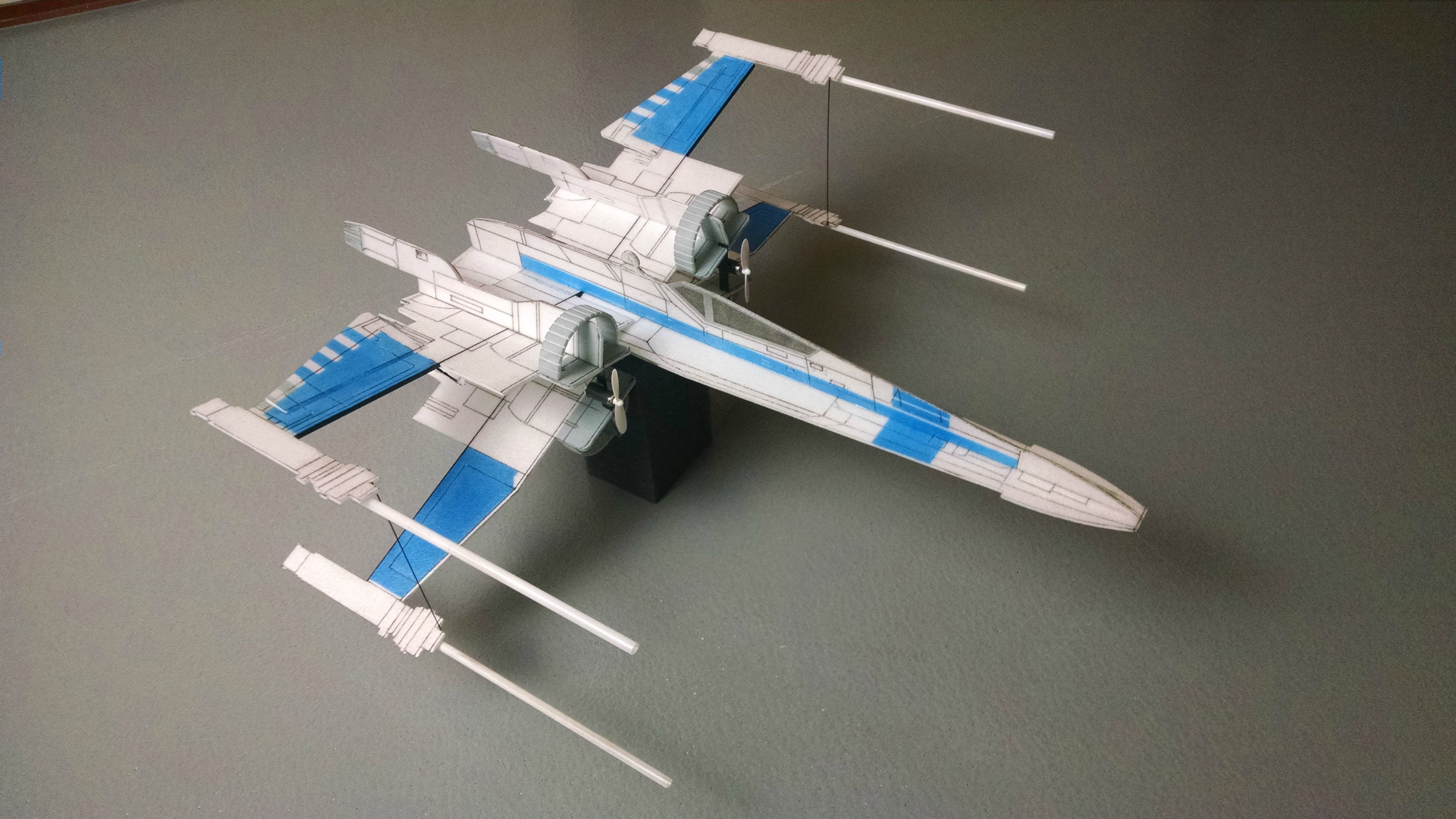Ever since I saw it in the The Force Awakens teaser trailer last year, I was in love with the new T-70 X-Wing Fighter. The design breathed new life into one of the most iconic craft in sci-fi history (the T-65) and paid homage to the original concept art of Ralph McQuarrie. It was an instant classic, and I wanted one that flew, just like the ones on screen. The following is an attempt to take my knowledge of, and experience with, micro R/C aircraft and apply it to creating a visually accurate, good flying version of the T-70 X-wing.

Where possible I use low cost off-the-shelf parts, with minimal need for custom fabrication or fine soldering. In many cases, an old broken micro RTF plane or quad would serve as an excellent component donor. As with most micro aircraft, weight (or lack thereof) is one of the most important drivers of how well the finished product will fly. I’ve tried to keep the build simple and minimize weight wherever possible. That said, special attention must be paid to component selection and glue use during the build, to make sure you end up with a fighter, and not a tank.


























